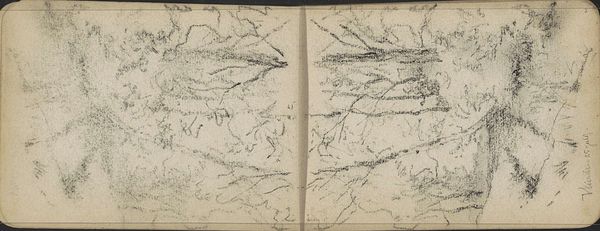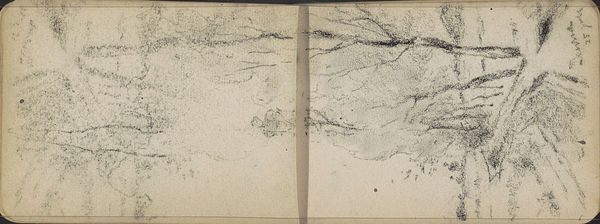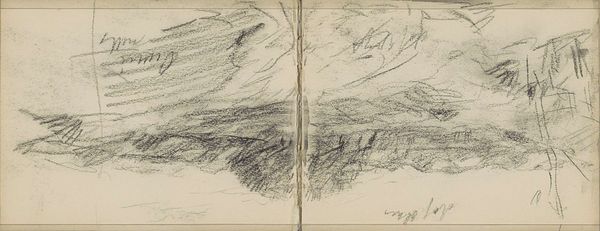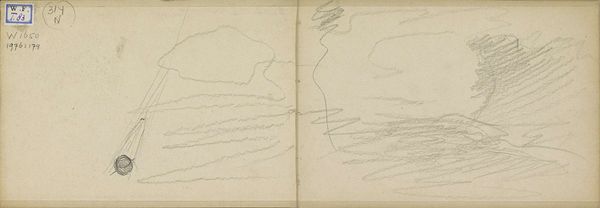
drawing, pencil
#
drawing
#
landscape
#
pencil
#
realism
Dimensions: height 95 mm, width 154 mm
Copyright: Rijks Museum: Open Domain
Curator: So, this is "Landschap te Beek," a pencil drawing by Willem Cornelis Rip, dating from 1892 to 1898. It is full of cross-hatching and loose scribbles, quite busy, and conveys a naturalistic setting. How does it strike you? Editor: It’s a little rough, definitely not polished. Almost like a quick study, perhaps done en plein air? The detail suggests careful observation of a natural landscape, but without any grandeur or idealization. How do you interpret its purpose within the broader art world of the late 19th century? Curator: Precisely. These studies were, and continue to be, vital to understanding the artist's process and interaction with their environment. Now, Rip was working during a period where artistic freedom and individual expression were being heavily debated, influencing not only artistic approaches, but also the role and societal expectations of artists. Do you think the lack of “finish” relates to an emerging shift away from academic artistic conventions at the time? Editor: That’s interesting – I can definitely see that. It’s not trying to impress with skill, but capture an immediate experience of nature. It's a working drawing that wasn’t supposed to be public. I wonder how his status or community positioned him? Curator: Indeed, Willem was not quite at the very centre, but closer to the margins of more progressive groups of artists. This very intimate, immediate sketch aesthetic challenges institutional artistic tastes. It suggests resistance to conventional display expectations, questioning what truly constitutes "art" and whose stories get told in major institutions. Perhaps a move towards greater accessibility in representing common landscapes as artworks? Editor: I hadn't considered that! Now it makes me consider how this seemingly simple drawing fits into larger conversations about who gets represented and how, challenging established artistic and social hierarchies. Curator: Right? Seeing it as part of these power dynamics truly enriches its appreciation. Thanks to Willem Cornelis Rip, we glimpse not just a landscape but a broader societal conversation!
Comments
No comments
Be the first to comment and join the conversation on the ultimate creative platform.













